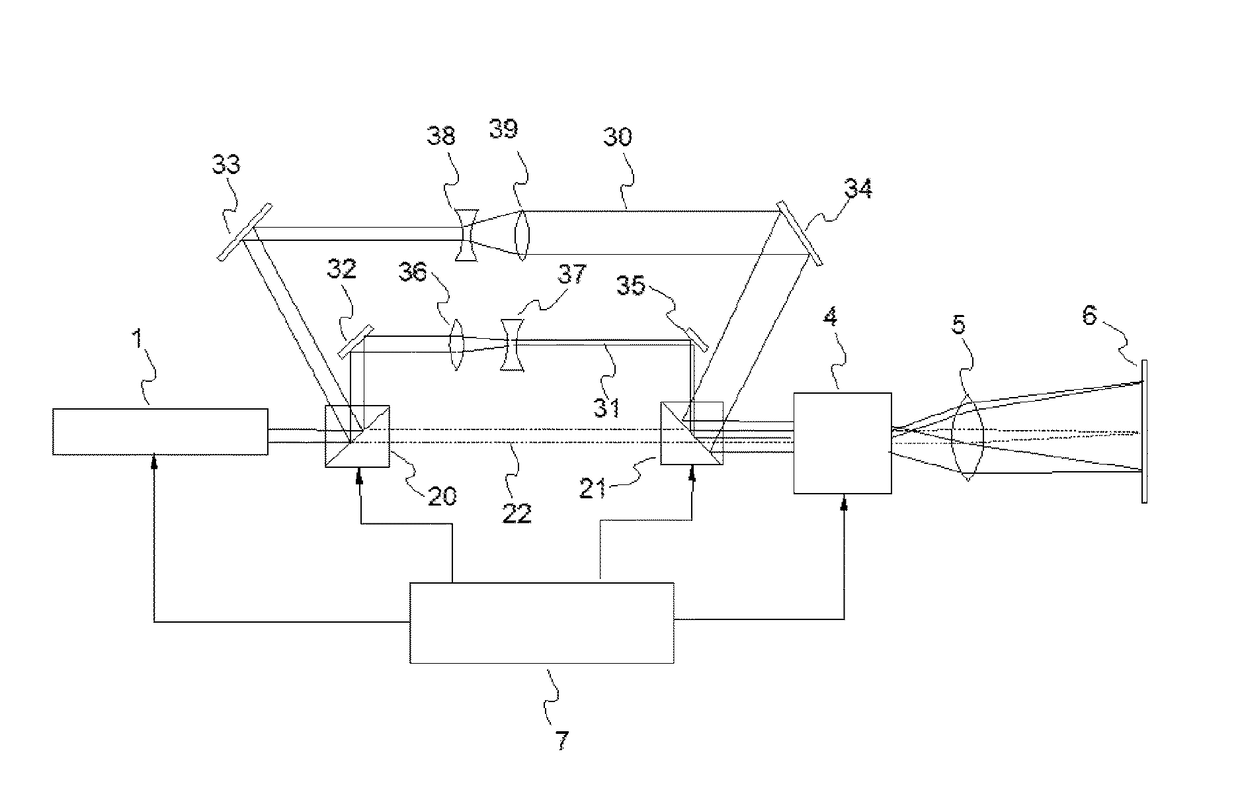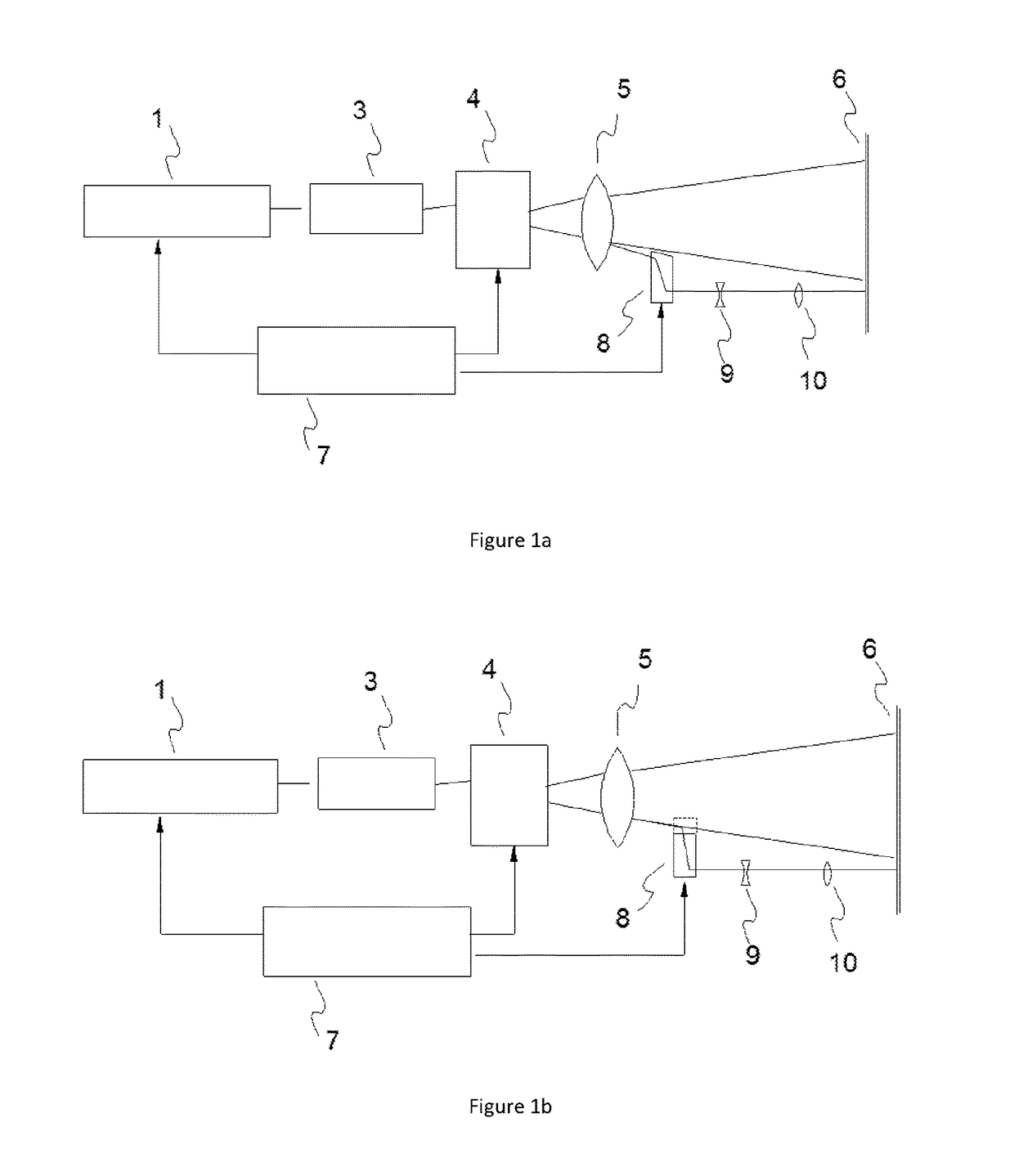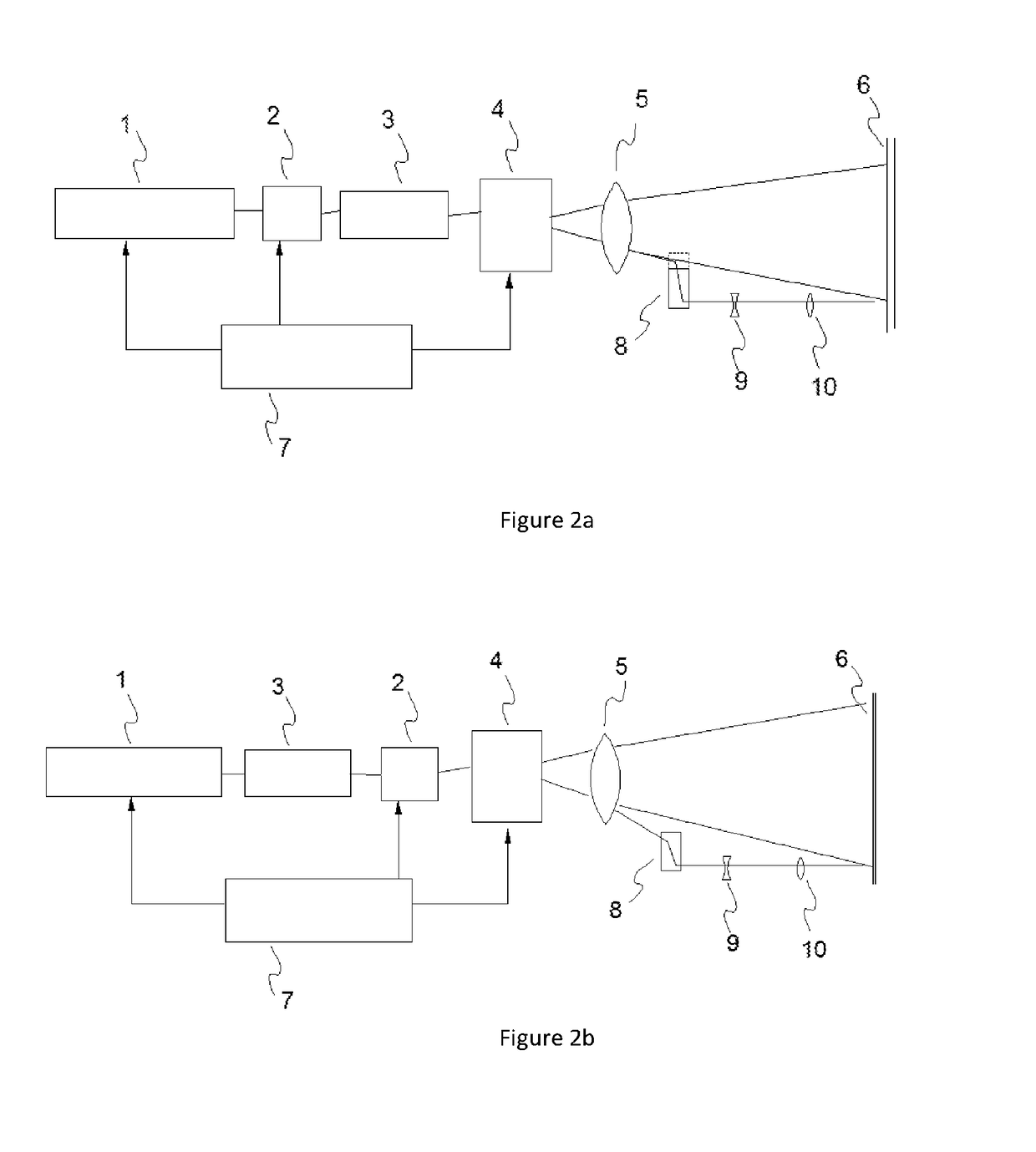Label imaging and cutting
a label and label technology, applied in labelling, duplicating/marking methods, labelling, etc., can solve the problems of reducing the number of labels that can be provided on a reel, and requiring an additional level of manufacturing complexity, so as to reduce the level of laser radiation absorption and facilitate image formation
- Summary
- Abstract
- Description
- Claims
- Application Information
AI Technical Summary
Benefits of technology
Problems solved by technology
Method used
Image
Examples
first embodiment
[0038]FIG. 1a is a schematic illustration of an apparatus for imaging and cutting a label according to the present invention;
[0039]FIG. 1b is a schematic illustration of a variant of the first embodiment of an apparatus for imaging and cutting a label according to the present invention;
second embodiment
[0040]FIG. 2a is a schematic illustration of an apparatus for imaging and cutting a label according to the present invention;
[0041]FIG. 2b is a schematic illustration of a variant of the second embodiment of an apparatus for imaging and cutting a label according to the present invention;
third embodiment
[0042]FIG. 3a is a schematic illustration of an apparatus for imaging and cutting a label according to the present invention;
[0043]FIG. 3b is a schematic illustration of a variant of the third embodiment of an apparatus for imaging and cutting a label according to the present invention;
[0044]FIG. 4 is a schematic illustration of a variant of the third embodiment of an apparatus for imaging and cutting a label according to the present invention, including a schematic illustration of the optical elements of a variable beam expander; and
PUM
| Property | Measurement | Unit |
|---|---|---|
| operating wavelength | aaaaa | aaaaa |
| scan speed | aaaaa | aaaaa |
| scan speed | aaaaa | aaaaa |
Abstract
Description
Claims
Application Information
 Login to View More
Login to View More - R&D
- Intellectual Property
- Life Sciences
- Materials
- Tech Scout
- Unparalleled Data Quality
- Higher Quality Content
- 60% Fewer Hallucinations
Browse by: Latest US Patents, China's latest patents, Technical Efficacy Thesaurus, Application Domain, Technology Topic, Popular Technical Reports.
© 2025 PatSnap. All rights reserved.Legal|Privacy policy|Modern Slavery Act Transparency Statement|Sitemap|About US| Contact US: help@patsnap.com



